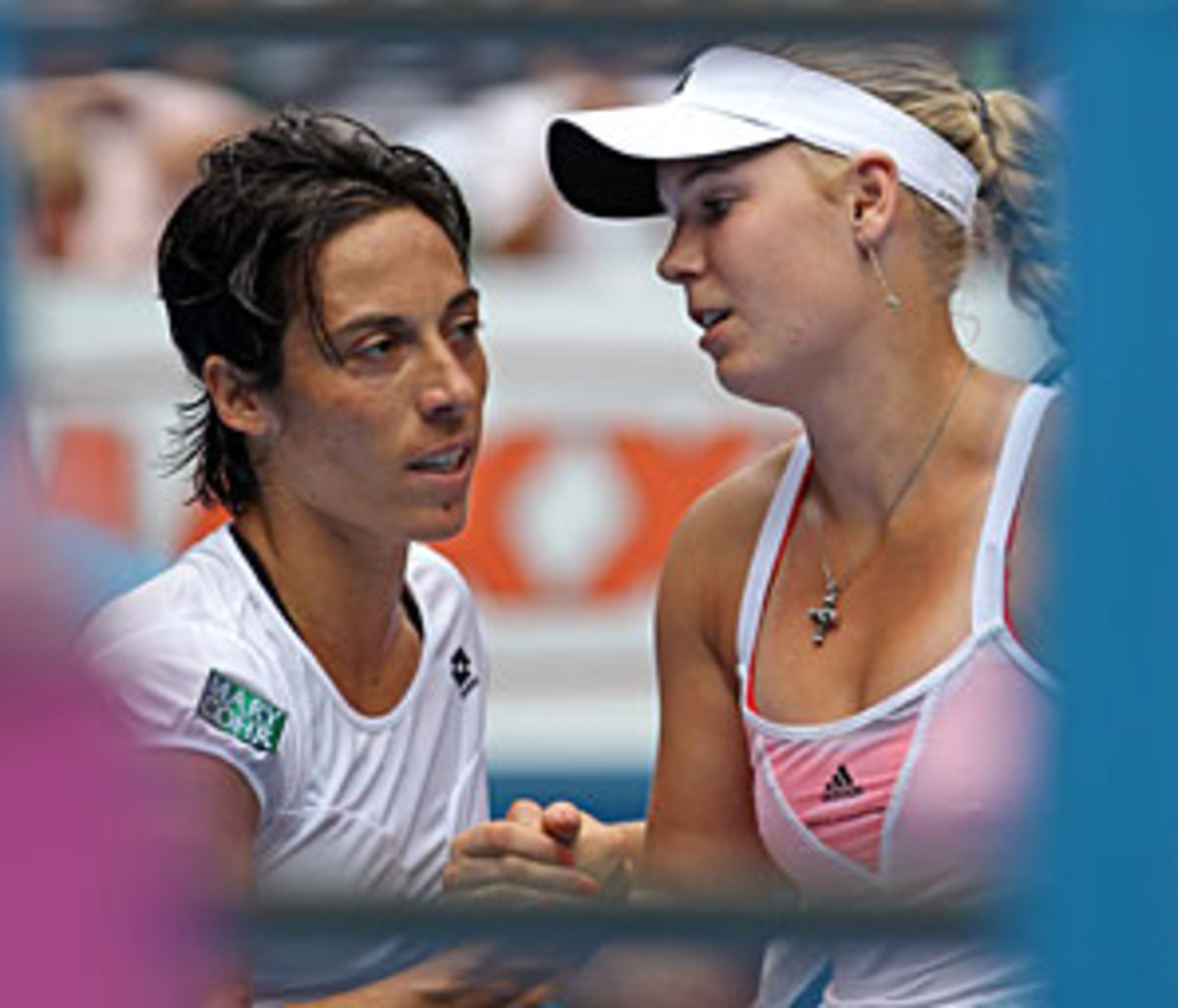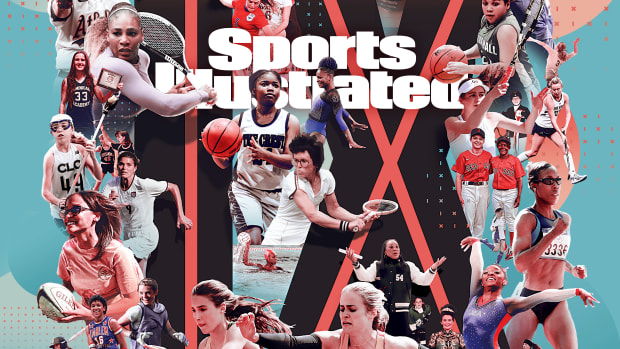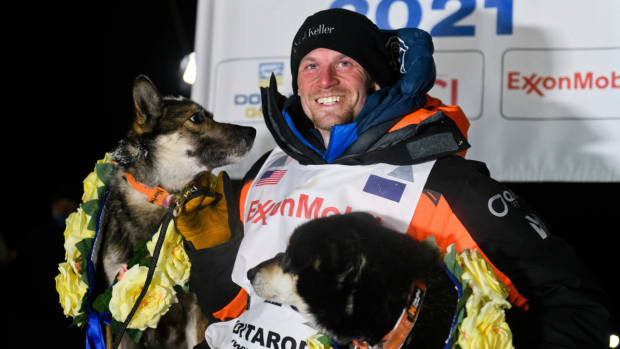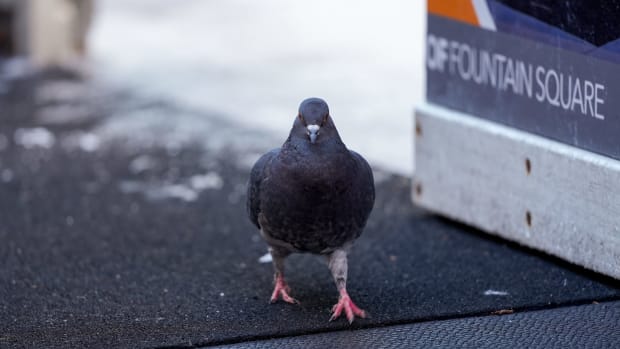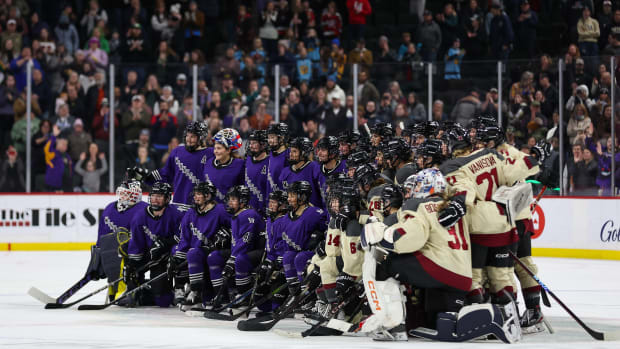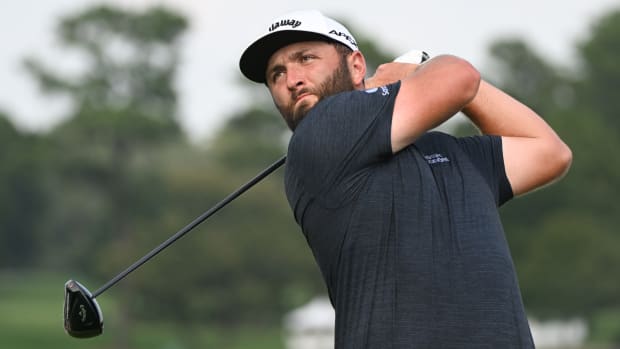No losers in quarterfinal classic between Wozniacki, Schiavone
The scores made it seem so ordinary -- 3-6, 6-3, 6-3 -- but the Caroline Wozniacki-Francesca Schiavone quarterfinal was a beacon of contrast at the Australian Open and the ultimate showcase for women's tennis. We may not see anything like it, with so much at stake, until Schiavone returns to the French Open to defend her title.
As a relieved Wozniacki so accurately noted after her hard-won victory, Schiavone "plays so differently than the other girls I play against." It's difficult enough for a defensive-minded baseline specialist to confront one of the few real jocks on tour, but Schiavone adds the elements of passion, fitness and will power. At 30, she isn't about to her place her name alongside the all-time greats, but it's deeply satisfying to know that she's making a historical impact.
In the wake of Schiavone's four-hour, 44-minute classic against Svetlana Kuznetsova, ESPN analyst Pam Shriver said this quarterfinal completed "one of the most remarkable sets of back-to-back matches in the history of tennis." And that speaks just as well for Wozniacki's resolve as it does for Schiavone's panache.
Wozniacki has won many admirers in this tournament, on many fronts. She turned her once-droll press conferences into can't-miss affairs, doing so with a very unforced brand of spirit and good humor. She'll never remind anyone of the punishing Chris Evert or the dashing Martina Navratilova on court, but gracious, does she get the job done.
Feeling the pressure, to the point of desperation, Wozniacki got a huge break in the early stages of the second set. Schiavone had a 6-3, 3-1 lead, and it really looked as if she was going to pull this off. Who else comes back that strongly from the longest women's match in Grand Slam history? Who has that much fight left against the No. 1 player in the world? Perhaps Francesca was feeling a bit too comfortable, for out of nowhere, she clanked four consecutive errors: forehand volley, cross-court backhand, down-the-line forehand, high forehand volley. At the one stage in which she had time to relax, she relinquished her air of superiority.
Two points really stood out, for me, in the third set. Hoping to nail down a break point at 1-1 and 30-40, Wozniacki unleashed an astounding service winner with her down-the-line backhand. And she saved her best point of the tournament for the sequence that put her up 5-2. First came a lunging forehand get off a wicked Schiavone backhand, resulting in a lob without much depth. Schiavone answered with a forehand smash, and Wozniacki didn't just return it. With almost no time to react, she somehow turned a retreating short-hop forehand into a flicked topspin lob, miraculously placed, beyond Schiavone's reach.
That pretty much decided things -- for everyone but Schiavone. She fought off a match point, and another, and before it finally ended, she'd done that nine times over the course of the two epic matches. Shriver was so impressed to see Schiavone rally from 5-2, 40-15 down to keep the quarterfinal alive, she raved: "Unbelievable. That game deserves a standing ovation. God love you, Francesca Schiavone."
As Schiavone departed the grounds, so bitterly disappointed that her climactic backhand was about a centimeter wide, she left behind memories of sweeping topspin, delicate slice, crisp low volleys (no one in tennis does it better) and that most wondrous of assets, style. Nobody had to tell Wozniacki that while equally difficult tasks lie ahead -- the lethal baseline power of Li Na, and perhaps Kim Clijsters thereafter -- she just managed to defeat the best pure tennis player in the world.
NOTES: Great to see Bud Collins in the Tennis Channel booth for a spell with Bill Macatee and Martina Navratilova. While praising Rafael Nadal as a talent "we've never seen before," Collins said that if Bjorn Borg were to surface in his prime today, with modern equipment, "He'd be just as good." . . . Lucky were the fans who took the time to watch Patrick Rafter and Henri Leconte, two of the all-time magicians around the net, in the Legends Doubles . . . Aside from making some major career strides, particularly in his comprehensive dismissal of Andy Roddick, Stan Wawrinka impressed observers by playing some crisp left-handed tennis in a practice session. He said he needs to prepare for an upcoming match against a friend, whom he bet he could defeat with his off-hand . . . The great Evonne Goolagong Cawley went out of her way to watch Australian prodigy Ashleigh Barty, just 14, play in the junior draw. Like Cawley, Barty has indigenous heritage (from her father's side; her mother is English), and the girl left a big impression while losing to the more experienced American, Lauren Davis. "I knew in just the first couple of games, she's really got it," Goolagong said. "She's got all the strokes. Topspin, but also slice, and it's good to see someone who knows how to volley. I was really impressed with her." . . . Meanwhile, Samantha Stosur didn't hold up so well as Australia's big hope, going down without much fight to Petra Kvitova. She didn't hit a single winner in the second set (to Kvitova's 16), and she's now 6-30 in Grand Slam matches when she loses the first set. Wrote Richard Hinds in the Melbourne Age: "The truth about Stosur is that like so many women just below the very top echelon, she is extremely physically gifted but a touch flighty under pressure. It will surprise few if she one day wins a Grand Slam title, and perhaps even less if she does not."
Covering major-league baseball, journalists are struck by the utter calm and easy grace of those whose fathers played the game: Ken Griffey Jr., Buddy Bell, Bob Boone and the like. They've been around clubhouses all their lives, and it shows in both their game and their demeanor. Alexandr Dolgopolov represents the tennis equivalent, having hung around the tour as a child while his Ukranian father taught some top pros, including Andrei Medvedev. As someone who has hit with exceptional players since he was a little kid, Dolgopolov isn't surprised by much -- and he admits that watching televised matches "makes players look fast. Not like in real life. When I get out there sometimes, I realize that I'm faster." . . . I made certain to catch Dolgopolov in action after reading an eye-catching review from the esteemed Peter Bodo in his Tennis.com blog. "This kid has talent to burn, and it a special kind of talent," he wrote. "He may be the most electrifying player I've ever seen when he's feeling it." Wow. That's stunning praise from someone who's really been around, but this 22-year-old is definitely a singular presence. People are blown away by his counter-punching skills, but at the same time, he unleashes tremendous winners from both wings, and he does so with great flourish. Roddick's coach, Larry Stefanki, admits to utter amazement when Dolgopolov gets in a finishing mood. "He hits the ball as hard as he can -- no, really, as hard as he can," Stefanki told the New York Times. "I've never seen anything like it."
Aesthetically speaking, it would be a fine development to watch Dolgopolov, Milos Raonic and Bernard Tomic replace Andy Murray, Robin Soderling and Tomas Berdych among the elite in a few years. They're simply more entertaining to watch, by a longshot . . . Dolgopolov had better be especially good, because that awkward-looking last name will really work against him when it comes to recognition in America . . . Raonic strikes more than a few observers as a young Pete Sampras, and admits that he "videotaped all his matches" when he was growing up -- "a really good comparison to have." Tennis Channel announcer Leif Shiras, who spent years on tour, said Raonic's arrival is reminiscent of Sampras' sudden ascent to the U.S. Open championship in 1990. And Milos' mother, Vesna, told reporters, "Even when he was 12, his first coach said he had a serve like Sampras." . . . Raonic can get a bit loose with his strokes at times, prompting TC analyst Justin Gimelstob to say, "He's got a little Nuke LaLoosh in him." But after Raonic unleashed three titanic aces in a service hold against David Ferrer, Shiras said, "You gotta be kiddin' me. This dude is filthy. Huge weapons. He's gonna be a real force in the game." . . . The great Rod Laver was among those pleasantly stunned by Tomic's measured, thoughtful performance against Nadal, particularly as he forged a 4-0 lead in the second set. "At 18, he's really showing a lot of class," said Laver. "He wasn't embarrassed playing Nadal. I think Nadal was a little embarrassed with what Tomic had done to him." . . . In tandem with the usual brilliance from Nadal and Roger Federer, these fabulous young talents are far overshadowing some weak-minded efforts on the men's side. We noted several instances in last Friday's column; more recently there were borderline tank jobs over the final two sets by Gael Monfils (against Wawrinka) and Jo-Wilfried Tsonga (against Dolgopolov). So we give the last word to Schiavone: "We work in this game to give the best. When you really say no, I can't do it, then you have to give something more. Always."
